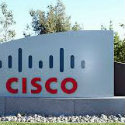Cisco is working to meet the challenging transition from rigid, hardware-based networks to flexible cloud nets based on software and programmable APIs.

LAS VEGAS -- Cisco Live -- The shift from rigid, hardware-centric infrastructure to networks built on flexible, programmable, cloud software will either kill Cisco or make it stronger.
That's the key underlying theme going into this week's Cisco Live IT conference, where the technology is hot and the weather is hotter, with temperatures forecast to top 100 degrees Fahrenheit every day. (For our non-US readers, the Celsius equivalent of that temperature is "OMG it's so hot I'm gonna die.")
The transition is a threat because selling hardware is Cisco Systems Inc. (Nasdaq: CSCO)'s core business, and if hardware gets commoditized that's the kind of existential risk that destroys once industry-dominant tech companies.
But the shift is also an opportunity, because Cisco has vast software and cloud resources, as well as a network of 1.5 million engineers and tens of thousands of partners -- potential allies facing exactly the same competitive risks and opportunities as Cisco.
On Monday, Cisco is scheduled to lay out its vision for network operators to greatly enhance agility by decoupling hardware and software and upskilling staff. The company also planned to introduce new security products.
"Networks must move from hardware-centric, manually operated closed systems to become more open and more programmable," Prashanth Shenoy, Cisco senior director of enterprise networking, told Light Reading in a briefing in advance of the announcement. That's the focus of Cisco's Digital Network Architecture (DNA), introduced in March. (See Cisco Rewrites Enterprise Networking DNA in 'Monumental Shift'.)
Shenoy laid out five principles for DNA:
Virtualize everything, to decouple hardware and software.
Design the network for automation.
Gather pervasive analytics for insight on network, application and user behavior.
Build for hybrid clouds (Cisco calls this model Cloud Plus).
And use APIs to make the network open and programmable.
Cisco's ONE software licensing model is integral to Cisco's strategy, enabling customers to buy software and hardware separately. Since its introduction in January 2015, 11,000 Cisco customers have implemented Cisco ONE, including 45% of Fortune 500 customers, Cisco says. (See Cisco Gives Its Software Licensing a Makeover.)
People are also key, specifically the 1.5 million Cisco Certified Internetworking Experts (CCIE) worldwide. Cisco is training those CCIEs to move beyond CLI configurations to programming and virtualization, including Python, APIs and Cisco programming tools. Cisco is adding a new Cisco Network Programmability Engineer Specialist Exam to meet the skills needs of the new network. Additionally, Cisco is implementing programs for its 70,000 channel partners, moving them from selling hardware boxes to automation, analytics and security, including new partner roles to accelerate the transition.
Want to know more about the cloud? Visit Light Reading Enterprise Cloud.
All of this agility requires security, and Cisco introduced new security technologies to safeguard networks:
Umbrella Branch software sits on the Cisco ISR branch office router, providing content filtering and blocking malware, phishing and C2 callbacks before they hit the network, even when offices are connected live to the Internet.
The Stealthwatch Learning Networks License resides on the ISR and makes the network a sensor and enforcer for branch-level threat detection and response, detecting traffic anomalies that can signal threats, and protecting the network instantly, Cisco says. Cisco acquired Stealthwatch when it bought the company Lancope in November. (See Cisco Boosts Analytics, Security With Acquisitions.)
The Meraki MX Security Appliance with AMP and Threat Grid provides protection for distributed enterprise and SMB customers, combining Meraki's cloud management and threat protection.
Umbrella Roaming, embedded into AnyConnect VPN, is designed to protect users off-network.
And Defense Orchestrator is a cloud-based application to manage a large security infrastructure.
What do you think? Will the shift from hardware to software and cloud-focused networks prove to be a great opportunity for Cisco, or will it be the company's undoing? Leave a comment and let us know.
Related posts:
— Mitch Wagner, 
 , Editor, Light Reading Enterprise Cloud.
, Editor, Light Reading Enterprise Cloud.
About the Author(s)
You May Also Like











